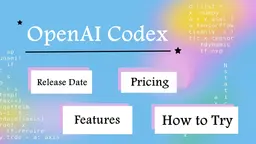什麼是 Genesis
Genesis 是一個為機器人、具身 AI 和物理 AI 應用設計的創新物理平台,將多種尖端技術整合到一個統一的框架中。其核心是一個從零開始重新設計的通用物理引擎,提供輕量、超快且用戶友好的模擬環境。該平台以其處理各種物理求解器、支持不同材料和物理現象以及通過其生成框架自動生成訓練數據的能力而著稱。目前,Genesis 的物理引擎和模擬平台組件作為開源軟件提供,旨在使機器人研究更加便捷,同時推動物理模擬保真度的邊界。
Genesis 如何運作?
Genesis 通過多層架構運行,將各種物理求解器(包括剛體、MPM、SPH、FEM、PBD、穩定流體)整合到一個統一的模擬框架中。它利用 GPU 加速並行計算,實現了驚人的模擬速度——在單個 RTX 4090 上模擬 Franka 機器人臂時可達 4300 萬 FPS。該平台包括一個強大的基於光線追蹤的渲染系統,支持照片級真實可視化,並支持跨不同系統和計算後端的跨平台操作。生成框架位於更高層,使用 AI 根據自然語言描述自動生成多樣化的環境、機器人、任務和技能。該框架將不同的數據模式通過專門的生成模塊路由,創建一個自導系統,實現持續學習和技能獲取。
Genesis 的好處
Genesis 的用戶受益於其前所未有的模擬速度、跨平台兼容性和對各種機器人類型和文件格式的全面支持。該平台通過其用戶友好的設計和廣泛的文檔,顯著降低了物理模擬和機器人研究的門檻。其可微分模擬功能支持先進的機器學習應用,而基於物理的觸覺傳感器模擬支持真實的接觸豐富操作。平台自動生成多樣化訓練數據的能力最小化了數據收集的人力,加速了機器人技能的開發。此外,其照片級真實渲染和對各種材料模型的支持確保了高保真模擬,與真實世界條件高度匹配。
查看更多












